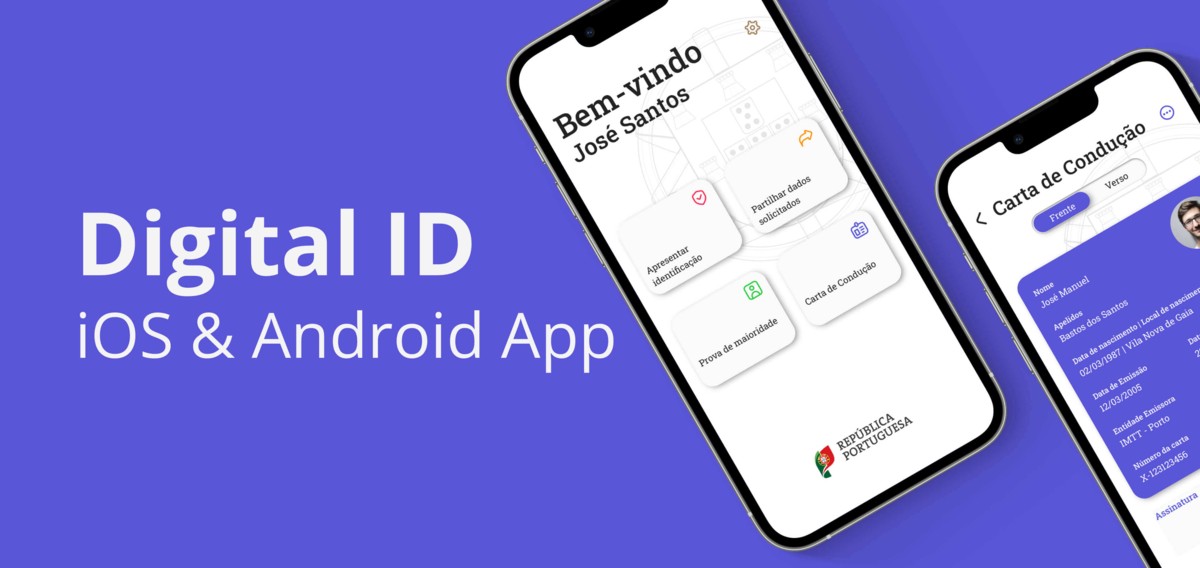Replacing physical ID with a digital version#
Digital transformation of our lives is still an ongoing process. While there are some areas this shift proved to be more swift, there are other aspects of our daily routines that still require a more physical approach.
ID verification from law enforcement agencies is one of those routines that is still conservative to change, and slow to expand. Back in 2021 Apple introduced ID document support integrated in its wallet app , providing a verification system with their already built-in biometric technology. Fast forward to today, and we still see less than a handful of states supporting the feature, with a few more committed to add support in the future; and this isn’t even supported outside US.
Attempting to take this challenge on a slightly different manner, the Portuguese MIA along with INCM and the company DNXT came up with a different approach on this usage, via the development of an app, for both Android and iOS, with specially developed technology for secure handshake communication.
This idea generated 3 different touchpoints to be designed and developed: a client app, for general use, an app for authorities to read the client apps, and a web interface portal for administrative operations and logs.
The challenges#
Security and reliability are the two most important factors when creating an app that will be used to validate your identity with law enforcement agencies. Besides that, the app needed to be simple enough to be used by anyone, universally available to the larger portion of the population with access to a smartphone.
This raised a few different design challenges: we had to cater not only for different operating systems, but also would need to come up with a UI that could adapt to older models screen real estate.
There was also the need to create a web interface for admin usage, to bulk verify records and assign new roles for inspecting officers.
Administration and Managing the platform#
Given that it was also necessary to cater for Administrative roles within this platform, a dedicated Web interface needed to be created as well.
While sharing the same unified visual language and experience as its end-user counter-part, it needed to include far more functionalities, such as analytics and metrics visualization and exporting, team roles and team management, as well as support for an integrated internal messaging system that would trigger notifications sent to the mobile apps.
A universal UI, tested for accessibilities#
Being a universal app we had to take extra caution testing and assuring it would be compliant and adequate in terms of accessibilities and contrast. We have developed 2 themes (light and dark), both with contrast validated colours, to ensure our users would be comfortable no matter the environment conditions or any visual impairing they might have.

Usability was at the core of all decisions made throughout the design process, and it was crucial when developing the navigation and repetitive user flows that get imprinted into users minds, triggering and almost instinctive behaviour.
The end result was a clean interface with an easy to use navigation, and simple interactions, providing an easy form of ID verification without impacting the normal routine check procedures.
Some final thoughts#
It was challenging to cater for color and sizing accessibilities, but looking back I would consider it a learning experience.


